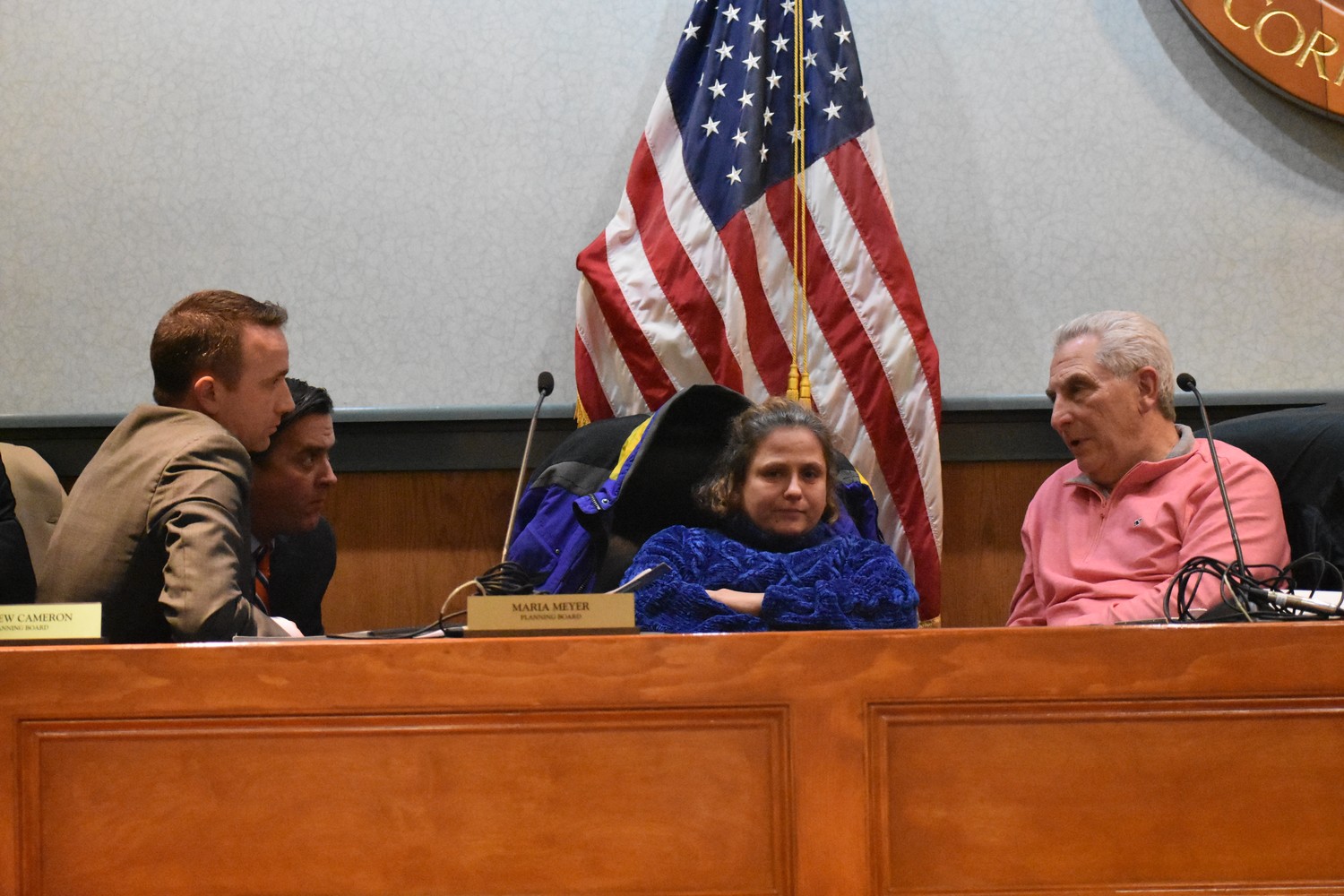Hempstead Ave. subdivision plan continues after Rockville Centre Planning Board changes decision
Preliminary approval comes after homeowners challenged ruling in court

Nearly six months after the Rockville Centre Planning Board denied a proposal by James and Brett O’Reilly to subdivide their property at 220 Hempstead Ave., board members decided to grant preliminary approval for the project last week after their initial ruling was challenged in Nassau County State Supreme Court.
“We’re pleased that the litigation has been resolved,” said Christian Browne, an attorney representing the O’Reillys, “and we look forward to finishing the subdivision process.”
The application to demolish the site’s late-19th-century home — the former parsonage of St. Mark’s United Methodist Church — and split the 1.75-acre property into six single-family plots was opposed by neighbors who were concerned about overdevelopment and dedicated to preserving what they considered a historic house.
Many also challenged the legality of a new street, to be called Killarney Lane, which would be built perpendicular to Hempstead Avenue to allow access to the four homes planned for the rear of the property.
“The Village of Rockville Centre is committed to preserving the quality of life and keeping the community an outstanding place to live, work, play, and raise a family,” village spokeswoman Julie Scully wrote in a statement. “The matter of development of the property at 220 Hempstead Avenue has been one of great interest in the community.”
After several hearings, planning board member Andrew Cameron made a motion to reject the O’Reillys’ proposal at a meeting last Nov. 18, citing the character of the village. The vote carried, 3-1. Browne questioned how single-family homes would not fit the character of the area, and five days later, the O’Reillys filed an Article 78 proceeding, used to appeal the decision of a state or local agency.
“In discussions with the court, it became clear that the Planning Board decision would not be sustained,” Scully said. “The Planning Board agreed to approve the preliminary subdivision, and included more than 31 conditions on that approval, all of which were accepted by the applicant.”
The conditions, she noted, included most or all of those recommended in November by Steven Leventhal, an attorney serving as counsel to the planning board, if the board had granted preliminary approval to the project that night. Though the board denied the application, its new decision brings the conditions back into play.
The O’Reillys, for example, agreed to make a $50,000 payment to the Village Park Fund, to be used exclusively for parks, playgrounds or recreational facilities, Scully said, noting that state law dictates that a planning board subdivision approval must address the need for parks and recreation.
Browne said that the O’Reillys had also agreed to work with the village Department of Public Works to plant trees along about 600 feet of Hempstead Avenue.
Other conditions recommended by Leventhal included the replacement of trees removed during construction, or in the previous 18 months, with twice the number of trees, either on the site or elsewhere in the village; and that the O’Reillys pay a performance bond to ensure the completion of all required site improvements within two years of final subdivision approval.
The Article 78 proceeding was not the first time the O’Reillys challenged the village in court over their proposed subdivision. The Zoning Board of Appeals had denied a variance in June 2017 for a previous plan for the property, which called for dividing it into four single-family plots. A month later, the village imposed a six-month building moratorium on properties that front private roads, though Browne argued that Killarney Lane would be a public street, available to the village.
Nassau County Supreme Court Judge John Galasso nullified the moratorium in October 2017, citing its “narrowly tailored language . . . which bespeaks of an invalid measure to halt development.”
The village’s Building Department then rejected the O’Reillys’ six-home proposal in March 2018, ruling that until the village board accepted Killarney Lane for dedication, it would be a private road. But the Board of Appeals unanimously voted to allow the plan to move forward to the planning board in April.
When the board issued its denial in November, several residents who live near the proposed development rejoiced. “It’s a shame that RVC has no over-arching Master Plan; permitting subdivisions like this one, whose plan depends upon construction of a new road — which has not yet been accepted by the village — is a big mistake, one that will chip away at the character of RVC,” resident Jean Toomey wrote in an email to the Herald after learning of the most recent approval. “It seems as if the wishes of the developer outweigh the wishes of nearby residents who will deal with living in what is going to be a far more congested area.”
Browne said that the O’Reillys are finalizing the map of the proposed subdivision, which will be submitted to the planning board once it is approved by the appropriate village and Nassau County agencies. He noted that the final plan would have “no material changes.”
The planning board is scheduled to host a public hearing on the development on June 18, Scully said. If it is approved, the village board will then consider whether to accept Killarney Lane. “If dedication is accepted, the street will be constructed by the developer according to village specifications,” she said, “and upon completion, the village will take over operation and maintenance of the street.”

 45.0°,
Fair
45.0°,
Fair 




